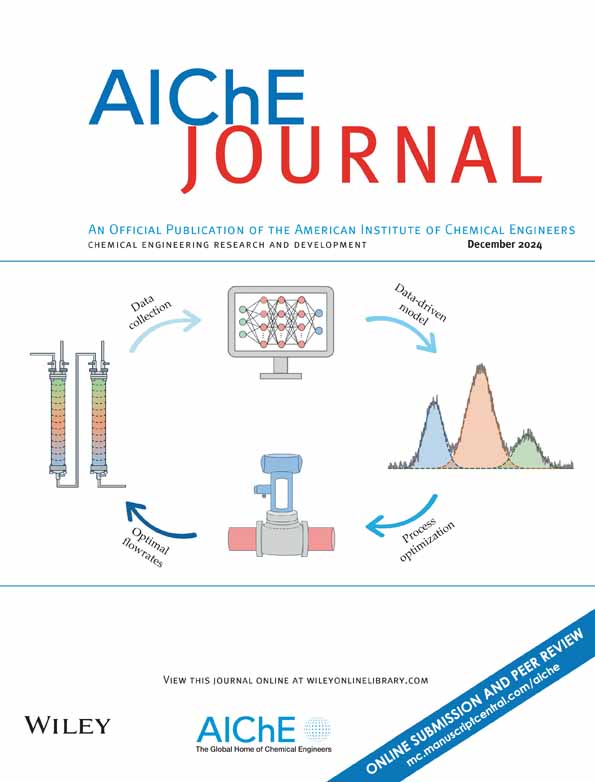提高阳极氯化法的法拉第效率:从电极修饰到设备开发的策略
IF 3.5
3区 工程技术
Q2 ENGINEERING, CHEMICAL
引用次数: 0
摘要
水溶液中的阳极电化学反应由于竞争的析氧反应(OER)而导致法拉第效率(FE)较低。为了解决这一问题,将碳纸电极的改性与无膜双相电化学装置相结合。扫描电子显微镜(SEM)和水接触角测量证实了改性CPs的疏水性。原位红外(IR)光谱和分子动力学(MD)模拟表明,疏水表面在电极界面排斥水,显著降低了水的局部浓度。该双相电化学装置是由表面活性剂促进的。透射电子显微镜(TEM)和动态光散射(DLS)证实,有机层中形成了反胶束,包封了水溶性反应物,增强了传质。通过脉冲方波电位,该组合策略使氯苯的生成效率提高了2.4倍。所提出的策略对各种芳酰氯的适用性得到了证明。本文章由计算机程序翻译,如有差异,请以英文原文为准。
Boosting Faradaic efficiency in anodic chlorination: Strategies from electrode modification to device development
Anodic electrochemical reactions in aqueous solutions often suffer from low Faradaic efficiency (FE) due to the competing oxygen evolution reaction (OER). To address this issue, the modification of carbon paper (CP) electrode is coupled with a membrane-free biphasic electrochemical device. Scanning electron microscopy (SEM) and water contact angle measurements confirmed the hydrophobic properties of the modified CPs. The in situ infrared (IR) spectroscopy and molecular dynamics (MD) simulation demonstrated that the hydrophobic surface repels water at the electrode interface, significantly reducing its local concentration. The biphasic electrochemical device is promoted by surfactants. Transmission electron microscope (TEM) and dynamic light scattering (DLS) confirmed the formation of reverse micelles in the organic layer, which encapsulates water-soluble reactants to enhance mass transfer. Through pulsed square-wave potentials, this combined strategy increased the FE by 2.4 times for the formation of chlorobenzene. The applicability of the proposed strategy toward various aryl chlorides has been justified.
求助全文
通过发布文献求助,成功后即可免费获取论文全文。
去求助
来源期刊

AIChE Journal
工程技术-工程:化工
CiteScore
7.10
自引率
10.80%
发文量
411
审稿时长
3.6 months
期刊介绍:
The AIChE Journal is the premier research monthly in chemical engineering and related fields. This peer-reviewed and broad-based journal reports on the most important and latest technological advances in core areas of chemical engineering as well as in other relevant engineering disciplines. To keep abreast with the progressive outlook of the profession, the Journal has been expanding the scope of its editorial contents to include such fast developing areas as biotechnology, electrochemical engineering, and environmental engineering.
The AIChE Journal is indeed the global communications vehicle for the world-renowned researchers to exchange top-notch research findings with one another. Subscribing to the AIChE Journal is like having immediate access to nine topical journals in the field.
Articles are categorized according to the following topical areas:
Biomolecular Engineering, Bioengineering, Biochemicals, Biofuels, and Food
Inorganic Materials: Synthesis and Processing
Particle Technology and Fluidization
Process Systems Engineering
Reaction Engineering, Kinetics and Catalysis
Separations: Materials, Devices and Processes
Soft Materials: Synthesis, Processing and Products
Thermodynamics and Molecular-Scale Phenomena
Transport Phenomena and Fluid Mechanics.
 求助内容:
求助内容: 应助结果提醒方式:
应助结果提醒方式:


